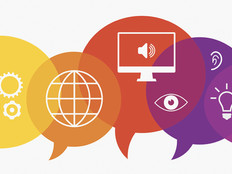What Districts Should Know About BYOD and Digital Learning
As more schools open their networks and classrooms to student-owned devices, the need for instruction that makes the most of these tools becomes ever more pronounced. Transitioning to a truly 21st century learning environment is challenging, to be sure.
While helping districts through this process, I've noticed a pattern in the challenges they must — and do — overcome. Adapting effectively to a bring-your-own-device and digital learning environment is far easier for districts if they follow these strategies.
Avoid Surprises
This means doing your homework, engaging your partners and sharing your vision before you launch a BYOD program.
Focus on the instructional benefits, which include more efficient and effective access to better resources and the alignment of instruction with the world of learning and work beyond school. Assure parents that their children will be safe online because of the technologies you have put in place to ensure it.
Realize that parents and teachers will have equity concerns. Explain that with a generation of students lacking the digital skills they need to compete in an information age, minor performance gaps among devices are less troublesome than an access gap between individuals. Reassure parents that anyone who can't afford or doesn't want to bring his or her own device will have one provided by the district.
Do the Infrastructure Groundwork
A robust infrastructure that's capable of handling significant wireless traffic is the most important technical consideration. After this, the rest is easy.
Don't Sweat the Small Stuff
Charging, distribution, technical assistance for devices and the security of the wireless network all can be accomplished with modest effort and expenditure.
What's more, I consistently find that concerns about damage and loss of devices are a nonissue. The more responsibility of ownership a student is given for a device, the more likely he or she is to take care of it.
It's not that these things don't matter. But they are problems that can be solved and shouldn't distract you from the end goal.
Commit to Device Agnosticism
I've found districts' anxiety-producing search for the "right device" to be counterproductive. In the end, the advantages of standardization don't outweigh the disadvantages of limited choice, including denying users the ability to select the devices they like and want to use, and increased equipment and software costs.
Focus on access and empowerment. The ability to take ownership of one's own learning and to pursue problems and solutions of one's own making are essential components of the 21st century skill set. Students can't develop this skill when their classrooms are locked down and their device use is limited to packaged programs or outdated textbooks.
The Time Is Now
Once district leaders start the process, they quickly discover that the hardest issues in this transformation center on institutional culture and beliefs. A digital learning environment's real potential lies in the new tools and opportunities that become available once the classroom is freed from its print-only materials and the geographic constraints of its four walls.
Let the learners drive the change. Teach them to make good choices, and then watch as they focus this energy on new ways to engage and learn your content. This is their world to create: The sooner we get out of their way, the sooner our investment in digital learning for all will pay its performance dividends.








